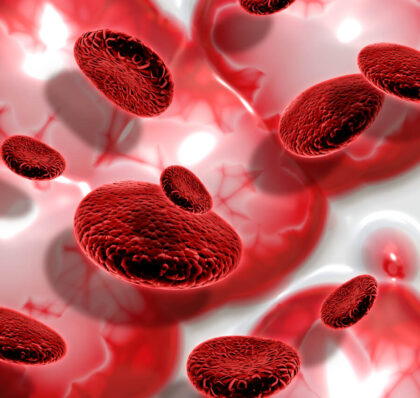Imagine a world where you could see exactly what’s happening inside your body. No more waiting for blood tests or imaging scans! This might sound like science fiction, but for scientists studying the intricate world of transparent blood vessels, transparent blood vessels are slowly becoming a reality. Buckle up, because we’re about to take a deep dive into these fascinating vessels and explore why their transparency is a game-changer in the medical field.
What Are Transparent Blood Vessels?
Transparent blood vessels are those that are clear enough to allow light to pass through, making it easier to visualize and study the inner workings of the vascular system. This transparency is particularly important in medical research and diagnostics, as it allows for non-invasive imaging and better observation of blood flow, vessel structure, and cellular activity within the vessels.
Why Transparency in Blood Vessels Matters
The transparency of blood vessels provides a unique advantage in medical imaging and research. It allows scientists and doctors to observe how blood flows through the vessels, how the vessel walls react to various stimuli, and how different conditions affect vascular health. This visibility can lead to early detection of diseases, more precise treatments, and a better understanding of vascular biology.
Role of Transparent Blood Vessels in Physiology
Transport of Oxygen and Nutrients
Blood vessels are the highways of the body, transporting oxygen and essential nutrients to tissues and organs. Transparent blood vessels enable researchers to see how these substances move and distribute within the body, offering insights into how efficiently our vascular system works and highlighting areas that might need medical attention.
Waste Removal and Toxin Exchange
Just as important as delivering nutrients is the role of blood vessels in removing waste products and toxins from the body. Transparent vessels allow for real-time observation of these processes, helping to identify any blockages or inefficiencies that could lead to health problems.
Regulation of Blood Pressure and Circulation
Blood vessels play a key role in regulating blood pressure and maintaining proper circulation. By studying transparent vessels, researchers can better understand the mechanisms that control blood pressure, how vessels respond to various physiological conditions, and how diseases like hypertension develop and progress.
Factors Influencing the Transparency of Blood Vessels
Genetic Factors and Inherited Conditions
Genetics play a significant role in the transparency and health of blood vessels. Certain inherited conditions can affect the structure and function of blood vessels, making them more or less transparent. Understanding these genetic influences can help in the development of targeted treatments for vascular diseases.
Impact of Lifestyle Choices on Vascular Health
Lifestyle choices, such as diet, exercise, and smoking, greatly impact the health and the transparent blood vessels. A balanced diet rich in fruits, vegetables, and whole grains, combined with regular physical activity, can promote vascular health and maintain vessel transparency.
Role of Aging in Blood Vessel Transparency
As we age, our blood vessels can become less transparent due to the buildup of plaque and other changes in vessel structure. This reduced transparency can hinder the ability to effectively monitor and treat vascular conditions. Understanding the aging process in blood vessels is crucial for developing strategies to maintain vascular health throughout life.
Methods to Maintain Healthy and Transparent Blood Vessels
Importance of Balanced Diet and Hydration
Eating a balanced diet and staying well-hydrated are fundamental to maintaining healthy blood vessels. Nutrients such as vitamins C and E, omega-3 fatty acids, and antioxidants support vascular health and help keep blood vessels clear and functional.
Regular Physical Activity and Exercise
Exercise improves circulation, strengthens the heart, and helps maintain the flexibility and transparency of blood vessels. Regular physical activity can prevent the buildup of plaque and reduce the risk of vascular diseases.
Avoiding Harmful Habits and Substances
Avoiding smoking, excessive alcohol consumption, and other harmful habits is essential for vascular health. These substances can damage the blood vessel walls, reduce transparency, and increase the risk of serious conditions such as atherosclerosis and heart disease.
Medical Conditions Associated with Blood Vessel Transparency
Common Diseases Affecting Blood Vessels
Several medical conditions can affect the transparency and health of blood vessels, including:
- Atherosclerosis: The buildup of plaque in the arteries that can reduce transparency and lead to blockages.
- Hypertension: High blood pressure that can damage vessel walls and reduce their transparency.
- Diabetes: Can cause damage to blood vessels, reducing their transparency and function.
Diagnostic Techniques for Assessing Vascular Function
Medical professionals use various techniques to assess the health and transparency of blood vessels, such as:
- Ultrasound Imaging: Non-invasive imaging that can visualize blood flow and vessel structure.
- MRI and CT Scans: Provide detailed images of blood vessels and can detect abnormalities.
- Angiography: An imaging technique that uses a contrast dye to visualize blood vessels.
Treatment Options for Improving Blood Vessel Transparency
Improving blood vessel transparency often involves treating the underlying conditions that affect vascular health. Treatment options include:
- Medications: To manage blood pressure, cholesterol, and other risk factors.
- Lifestyle Changes: Including diet and exercise modifications.
- Surgical Interventions: In severe cases, procedures like angioplasty or bypass surgery may be necessary.
Future Research and Innovations in Transparent Blood Vessels
Advancements in Imaging Technologies for Vascular Visualization
Ongoing research is focused on developing advanced imaging technologies that can provide even clearer and more detailed views of blood vessels. These innovations will improve diagnostic accuracy and allow for earlier detection of vascular diseases.
Potential Therapies Targeting Vascular Transparency
Researchers are also exploring new therapies that can improve or restore the transparency of blood vessels. These therapies could include drugs that promote vessel health, gene therapies, and other innovative treatments.
Collaborative Efforts in Understanding Vascular Health
Collaboration between researchers, healthcare providers, and technology developers is crucial for advancing our understanding of vascular health and developing new treatments. These efforts will help ensure that patients receive the best possible care and that we continue to make progress in the field of vascular medicine.
Conclusion
Understanding the importance of transparent blood vessels is essential for maintaining vascular health and preventing diseases. By recognizing the factors that influence vessel transparency and taking steps to promote vascular health, we can improve our overall well-being. Advances in imaging and treatment options continue to enhance our ability to diagnose and treat vascular conditions, ensuring that we can effectively manage our vascular health now and in the future.
FAQs
What are the main functions of blood vessels in the body?
Transparent Blood vessels transport oxygen and nutrients to tissues, remove waste products, and help regulate blood pressure and circulation.
Can lifestyle changes improve the transparency of blood vessels?
Yes, a healthy diet, regular exercise, and avoiding harmful habits can improve and maintain the transparency of blood vessels.
How do medical professionals assess the health of Transparent blood vessels?
Medical professionals use techniques such as ultrasound imaging, MRI and CT scans, and angiography to assess the health and transparency of blood vessels.







